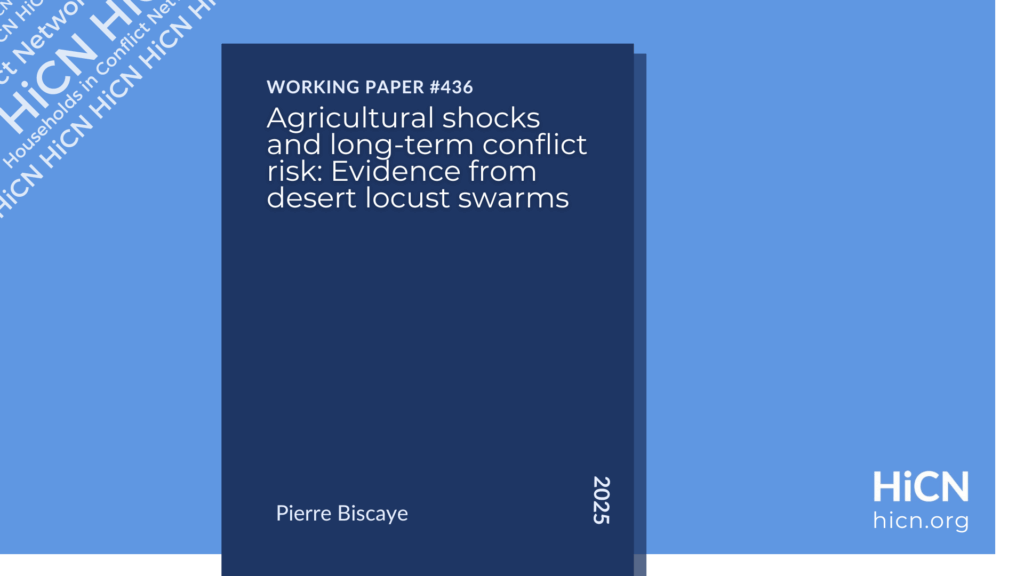
Can transitory economic shocks affect long-term violent conflict risk? This paper studies this question using data on con ict events and desert locust swarm exposure across 0.25◦ grid cells in Africa and the Arabian peninsula from 1997-2018. A staggered event study approach shows that swarm exposure increases the average annual probability of any violent conflict in a cell by 1.8 percentage points (64%) in subsequent years. Effects are driven by initial agricultural destruction: exposure to swarms in nonagricultural areas or outside the main crop growing season has no impact. Agricultural activity (but not average productivity) falls following swarm exposure, indicating persistent indirect economic effects which may reduce opportunity costs of fighting. The largest effects of swarms on con ict occur with a 7 year lag and there are no effects in the year of exposure, inconsistent with predictions based on changes in opportunity costs of fighting alone. Impacts of past exposure are concentrated in periods of social/political disruptions driven by other proximate causes (e.g., the Arab Spring, civil war). This creates the delay in the largest impacts of swarm exposure, and aligns with models of civil conflict emphasizing the role of grievances in conflict onset. Patterns of long-term impacts on conflict and heterogeneity by local unrest are similar for exposure to droughts, indicating the mechanisms are not specific to locust swarms. These results add motivation for policies mitigating the risk of agricultural shocks and promoting household resilience and recovery.